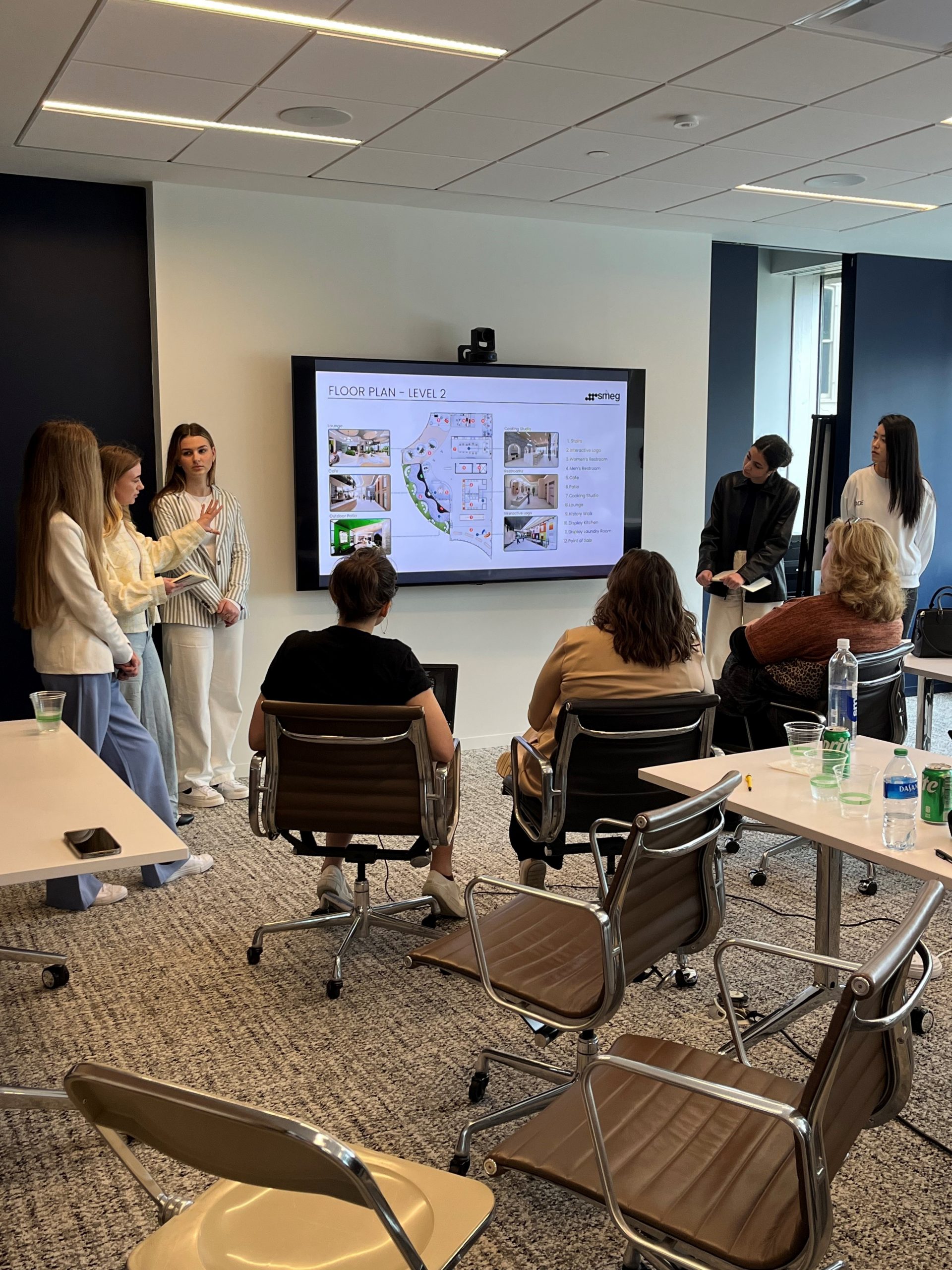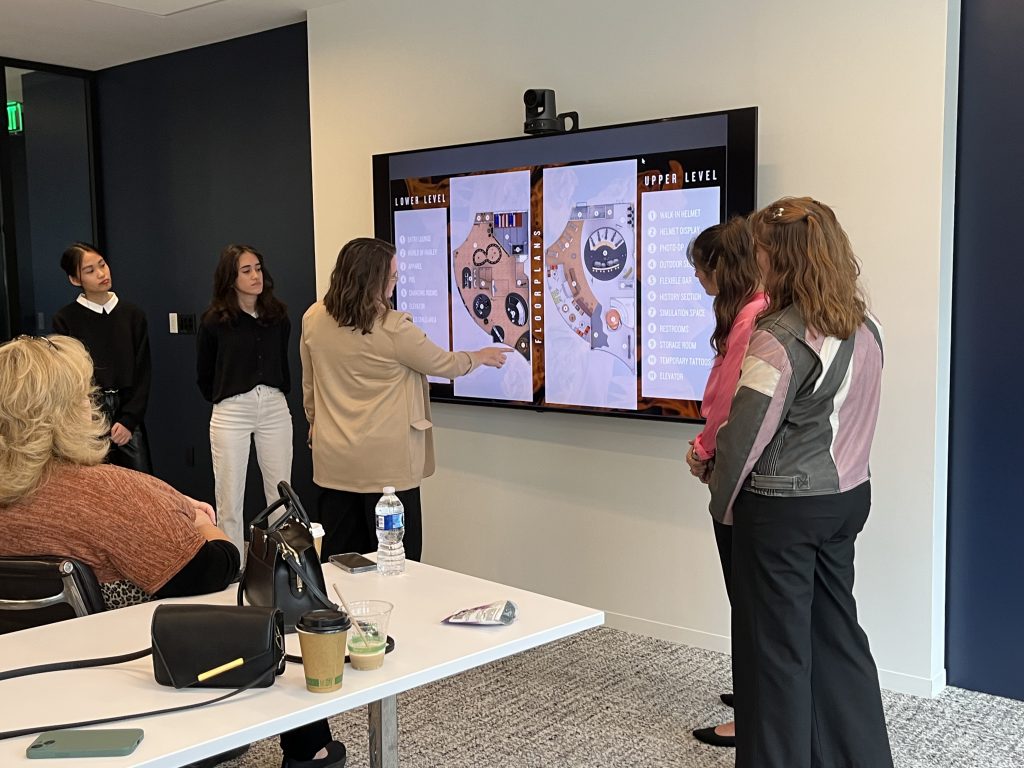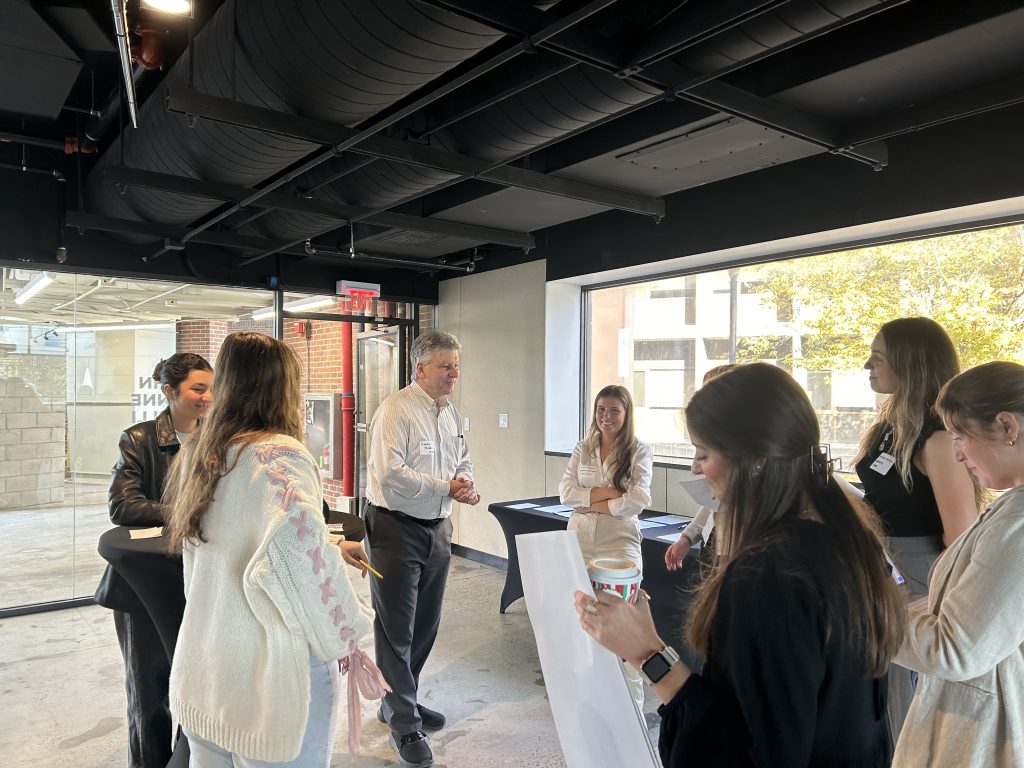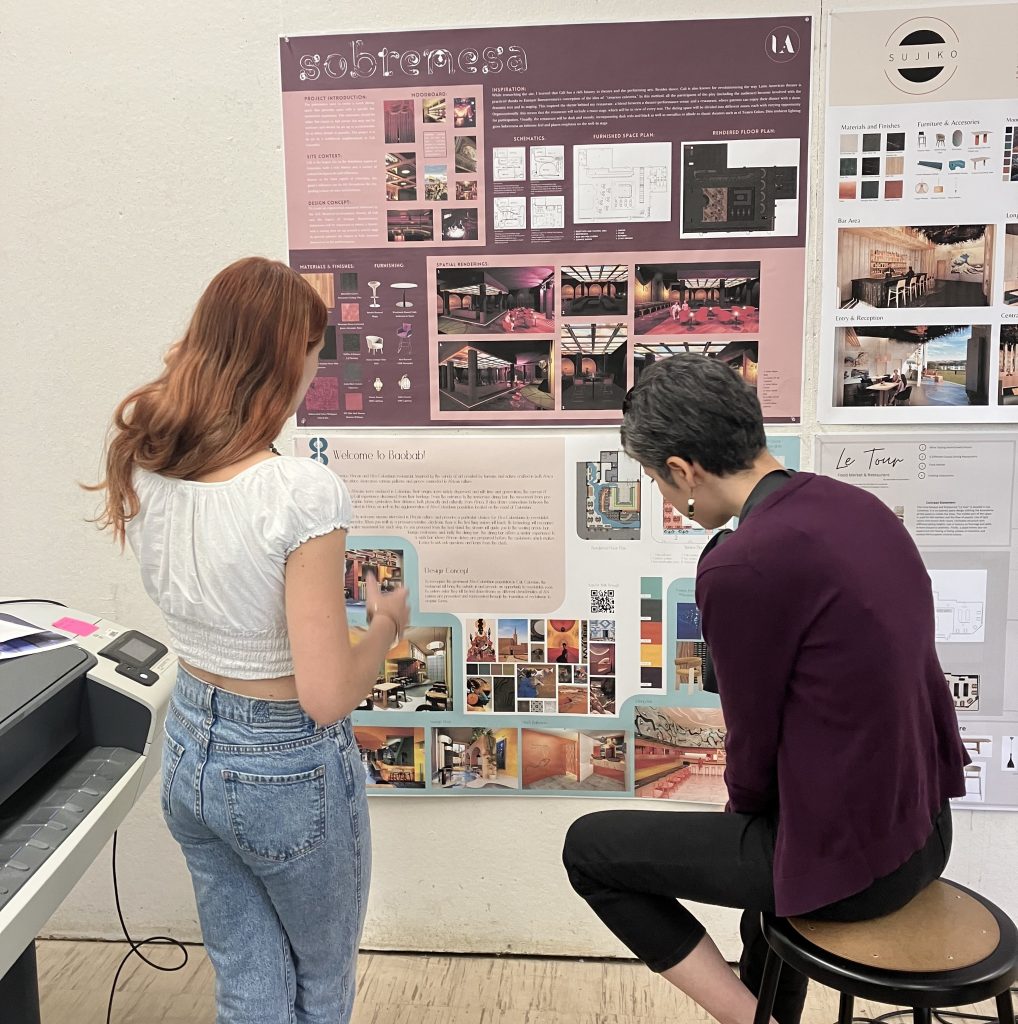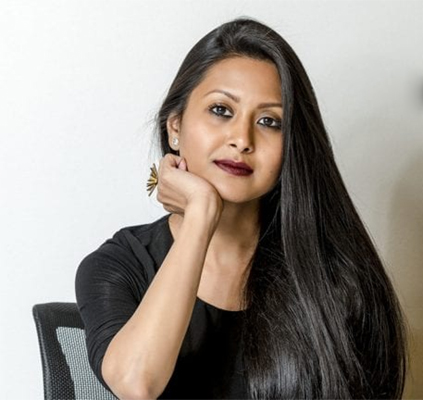The Bachelor of Design (B.Des) with a major in Interior Design is:
What are UF Interior Design studios like?
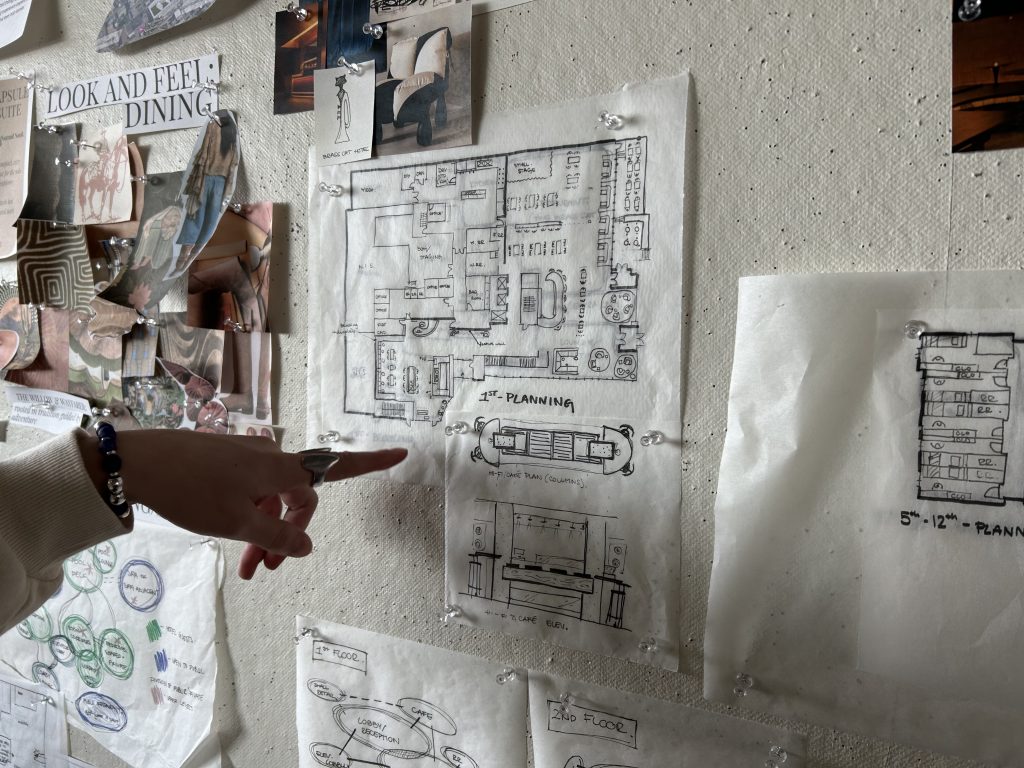
As a discipline, Interior Design involves a broad range of intellectual and practical abilities and encompasses many sub-fields of study. One of the most important attributes of a designer is the ability to synthesize information from many diverse sources and areas of expertise. For any given project Interior Designers research information related to the project, interview project users, conceptualize design approaches, draw their design ideas, confirm their feasibility, and communicate them to an audience. In doing so, they utilize knowledge from all areas of the curriculum including environment and behavior theories, construction materials, building technology, history, visualization techniques and many others.
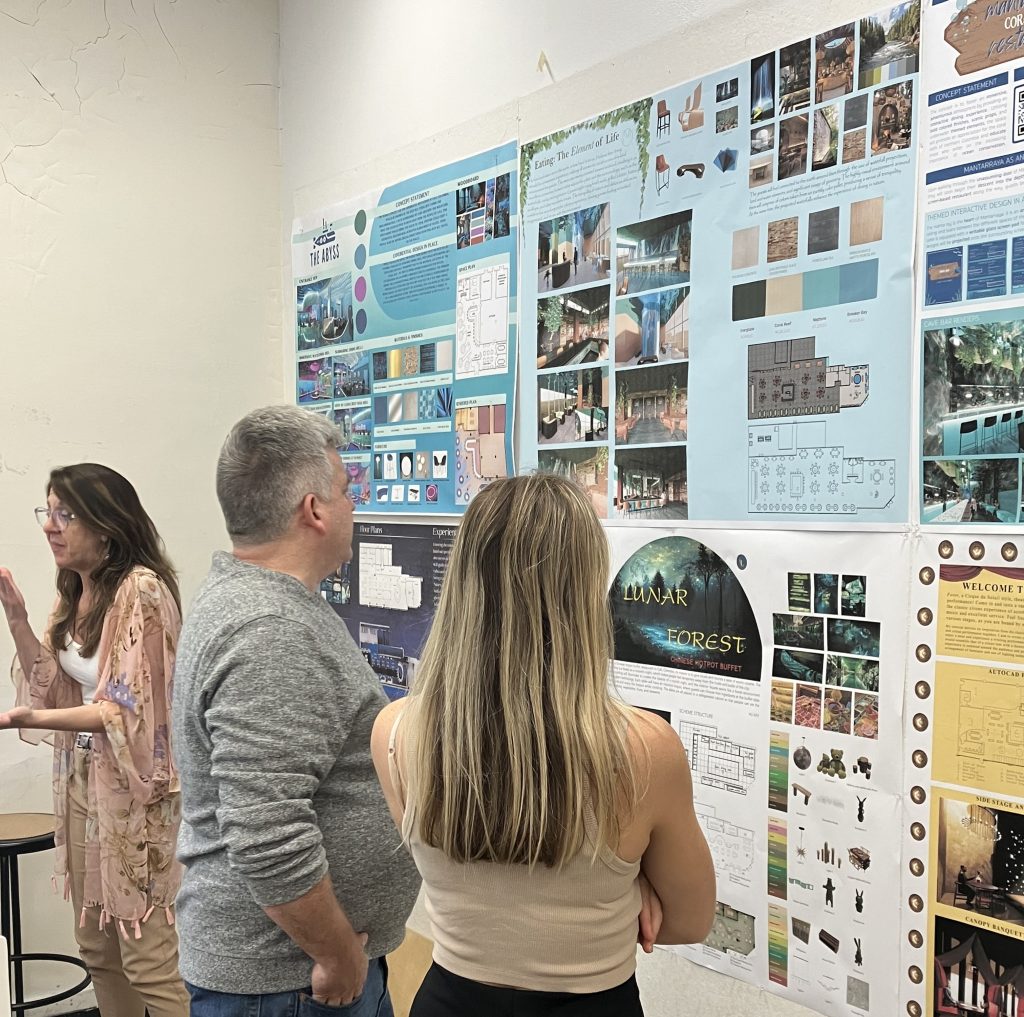
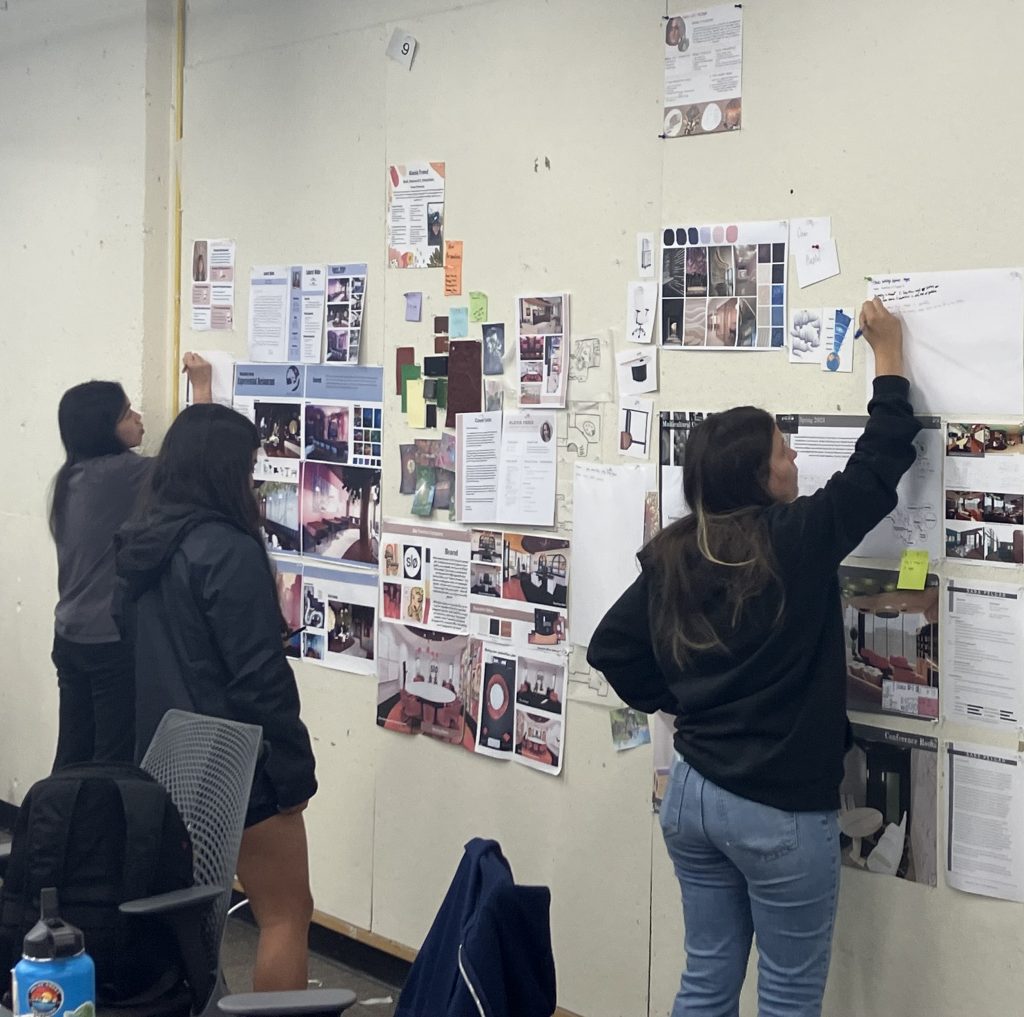
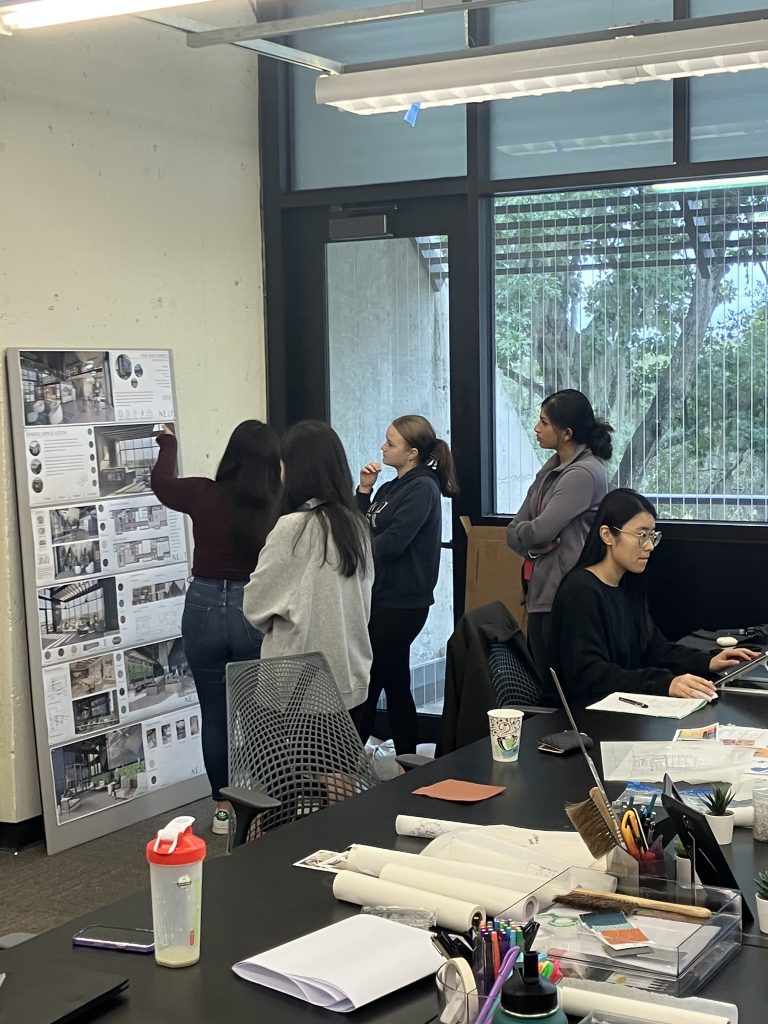
Studios are available to students on a 24/7 basis and students spend long hours in them, working on their projects. The vibe is informal and some of their best ideas arise outside of class, through an after-hours discussion or a chance encounter.
Types of Projects We Do
Interior design students learn to solve complex design problems in many market sectors. The professional skills they acquire include technical and business-related skills that serve them well as they enter the workforce after graduation. As we prepare the future design leaders of our continually changing world we strive to equip them with lifelong professional habits and an agile disposition to tackle new challenges now and in the years ahead.
Hospitality
Seniors are challenged with developing a place-sensitive guest experience and appropriate business strategy that supports the needs of identified guest types as well as operations within their multi-level building sites.
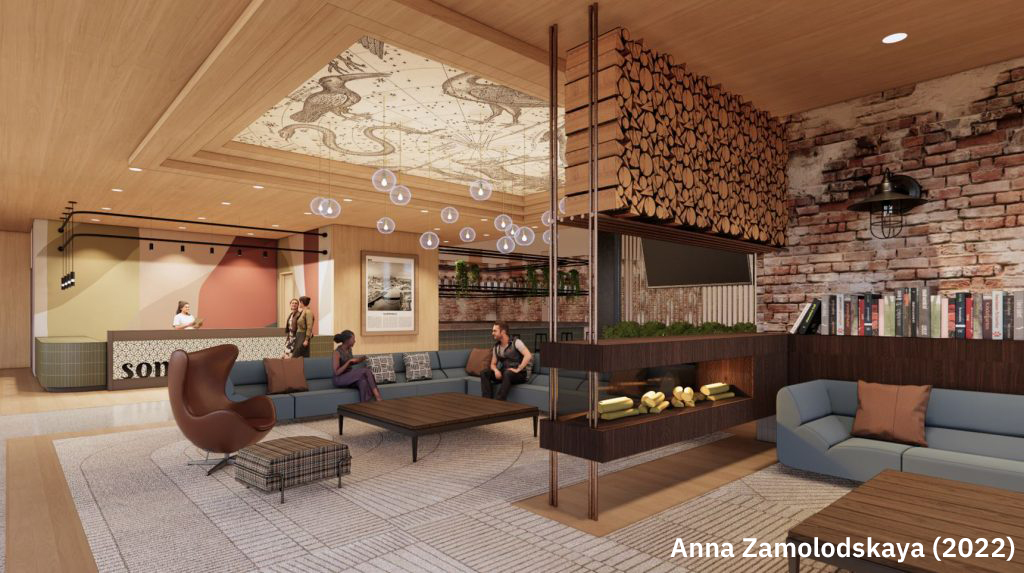
Healthcare
Seniors take a deep-dive in exploring the nuances of healthcare design through collaborative team projects and external feedback from architectural design firms like Gresham. Recent projects have explored the design of ERs, oncology, and orthopedic units.
Retail
In the spring of their junior year, students tackle the retail market sector with assigned brands, and are challenged to push the boundaries of the shopping experience. What should the retail of tomorrow look like?
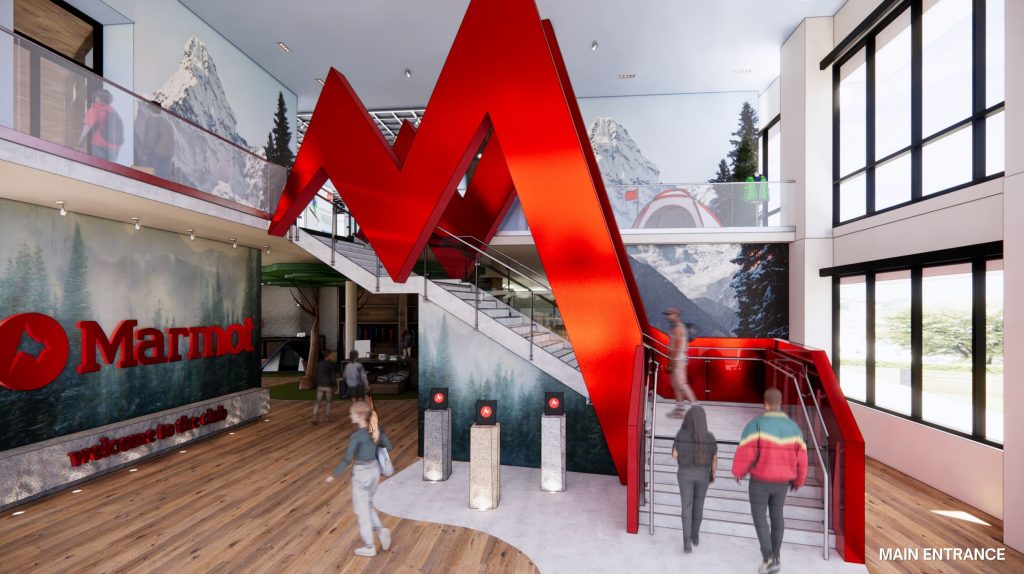
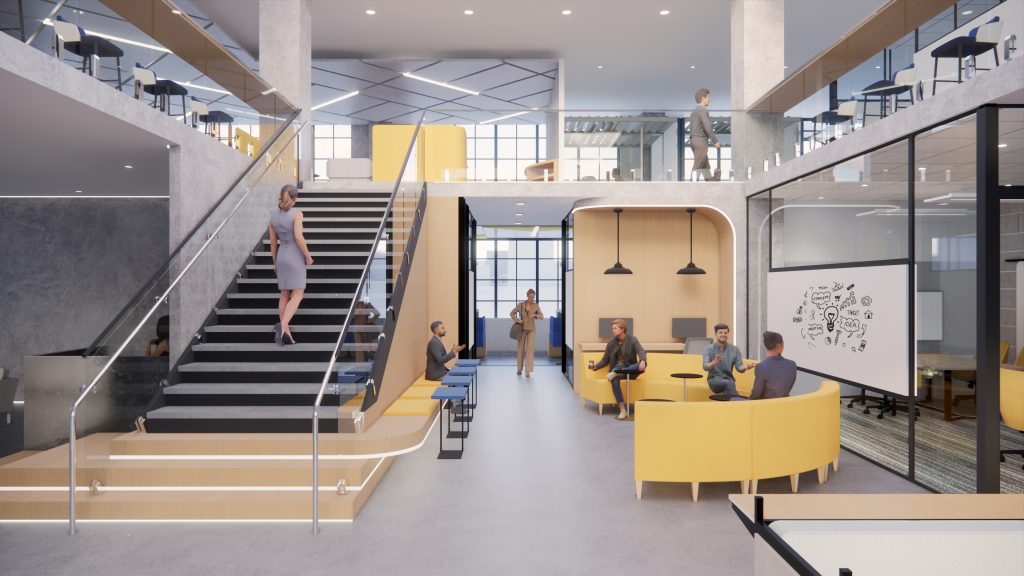
Workplace
Junior students explore the multi-faceted nature of workplace environments with consideration to complex programmatic needs, departmental relationships, and developing solutions that consider a variety of human factors.
Higher Education
The UF campus becomes a learning lab where students use local sites to re-imagine spaces within higher education. What should the classroom of tomorrow look like? How do we support learning and collaboration beyond the classroom and across in-between spaces?
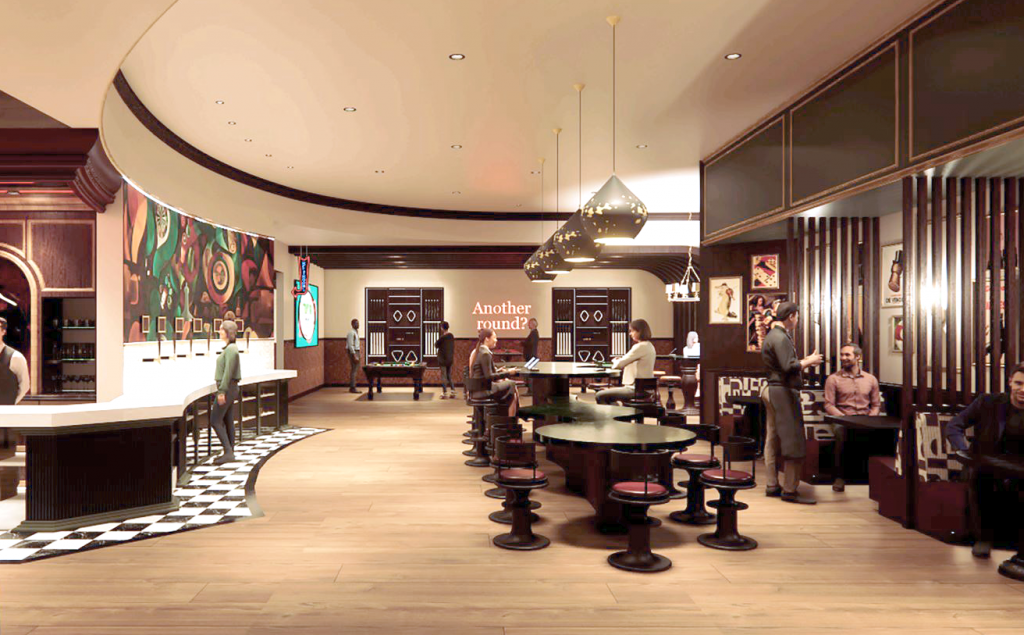
Restaurant
Students take on the role of “Experience Architects” to design the ‘special sauce’ that turns a restaurant into a destination restaurant. These designs consider how the built environment can go beyond to support social and active engagement.
What Does ‘Learning’ Design Look Like?
We believe in a problem-based, iterative, learning-by-doing model in which students produce creative design solutions for specific design problems assigned to them. As part of this self-directed type of learning, students are expected to wrestle with the assigned design challenge and find proper solutions. Guided by faculty, students are expected to focus their thinking and engage in a design process that will lead to potential solutions. There is the expectation that students will come to class prepared to share their work and that they will also contribute to the overall discourse.
Learning design requires on-going critical examination and evaluation of the work and, to that end, our faculty provide supportive, candid and constructive feedback regularly. Desk crits and pin-ups are generally the most common forms of giving feedback and consist of informal and personal interactions between students and faculty.


